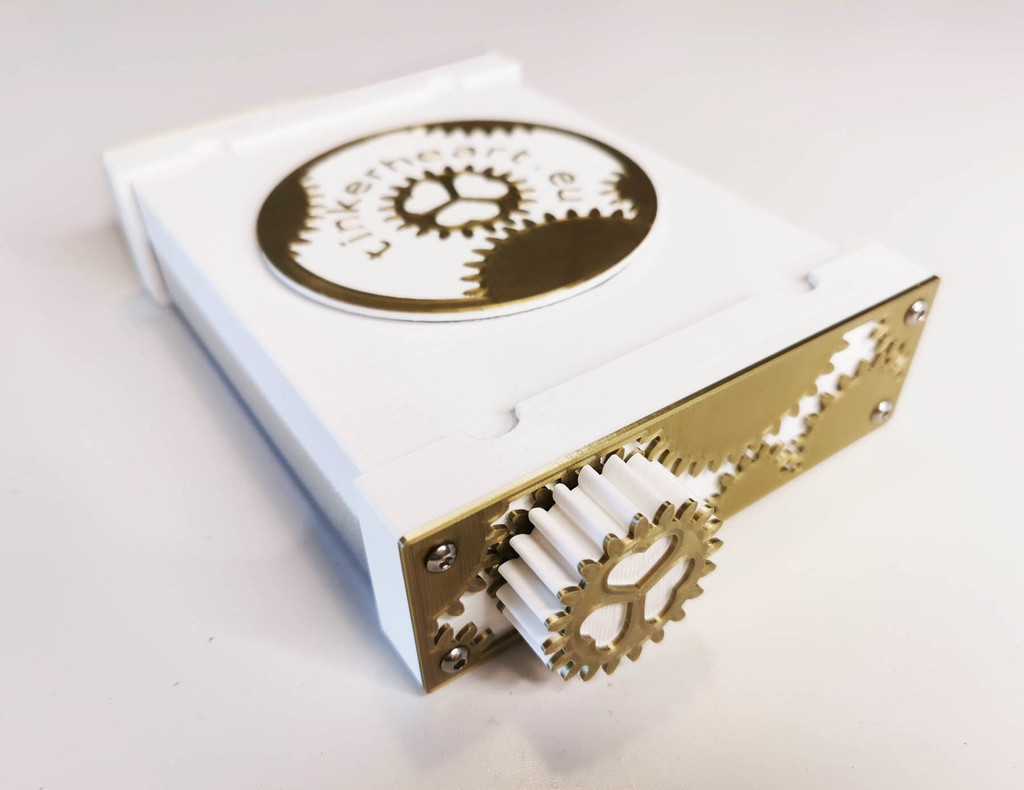
tinkerInduction MK1, DIY induction heater for demonstrating induction
thingiverse
This machine is less useful than our previous machines: an induction heater partially made from plastic. Depending on the type of plastic used to print the plastic parts, it may be prone to spectacular and dangerous failures, so don’t make one at home. I’ll provide the stl files in case someone wants to make the needed improvements to the design. It works by inducing eddy currents, loops of electrical current induced within a conductor by a changing magnetic field, here generated by the rotating magnets. The conductor should ideally be made from a pure ferromagnetic metal and held above the rotor without touching it. In this video I use some iron grit. A few more words about safety: This machine has exposed moving parts and can be dangerous to use, especially if not constructed properly. It is not a toy, not for kids and if you build one I recommend that you at the very least use it inside a proper enclosure. Neodymium magnets are not toys, they can attract metal and other magnets (no surprise) and they are brittle and prone to shattering on impact which can result in sharp shrapnel traveling at high velocity (possible surprise, also painful. And potentially blinding). So always protect your eyes (and other people’s eyes). When sourcing materials there are a few things to be aware of. The fan I use can be purchased both as new and as refurbished – I recommend that you get new ones, as the quality of the refurbished ones varies too much to my experience. Also, when purchasing neodymium magnets the most common magnet strength ratings found on AliExpress are N35, N50 and N52 – sadly many sellers lie about the strength of their magnets since they know most people can’t measure the exact level of magnet strength, so do not focus so much on the strength rating, simply buy from a seller with good reviews. Assembly note: Adjacent magnets should have opposite polarities, an extra magnet is used to test polarities before things are glued in place! See my other projects here: http://tinkerheart.eu 3d printing advice I printed my own machine parts using inexpensive PLA on a Prusa MK3S. PLA is not recommended, but I was low on supplies. Threaded parts should be printed at a layer height of 0.2mm or less. 3 perimeters and 10% or more infill works well for me. How to build your very own tinkerInduction Please watch this movie: https://youtu.be/nEV4mKGTtus Printed parts 1 x inductionFront 1 x inductionBack 1 x inductionRotor 1 x inductionKnob 1 x inductionShell Please visit http://tinkerheart.eu/tinkerinduction/ for the complete bill of materials. This project is for information purposes only and does not form a professional relationship in any way; it is “use at your own risk” so do not work beyond your capability and seek help if you need it. I assume no liability for any direct, incidental, consequential, indirect or punitive damage incurred as a result of any of the information contained in this video. No information contained in this video shall create any expressed or implied warranty or guarantee of any particular result.
With this file you will be able to print tinkerInduction MK1, DIY induction heater for demonstrating induction with your 3D printer. Click on the button and save the file on your computer to work, edit or customize your design. You can also find more 3D designs for printers on tinkerInduction MK1, DIY induction heater for demonstrating induction.
